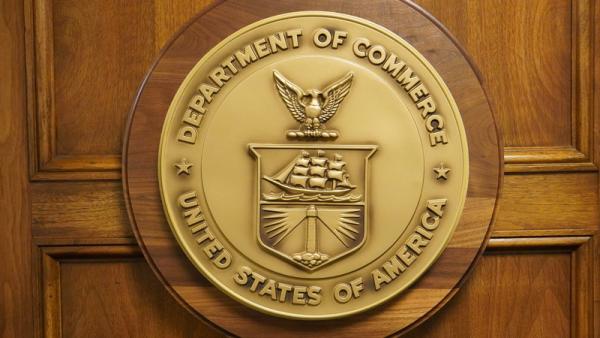UKinUSA / Flickr

Corey Lee Bell, Project and Research Officer, Australia-China Relations Institute, University of Technology Sydney |

Elena Collinson, Senior Project and Research Officer, Australia-China Relations Institute, University of Technology Sydney |
This article appeared in the Australian Institute of International Affairs’ blog, Australian Outlook, on February 24 2023.
There has been a qualitative change in the discourse surrounding the purpose of recent technology export controls. No longer are they seen as solely aimed at restricting the supply of high-end military or dual-use technologies. Instead, they are increasingly being seen as tools of a broader economic and technology war between the world’s two largest economies.
Washington is also stepping up its work to bring allies – and even some non-aligned nations – into its way of thinking. Reports of progress around Japan and the Netherlands joining US-led restrictions on chipmaking tools reveal that despite ongoing reservations among some allies, this approach is making some inroads.
Australia has thus far refrained from participating. But as a major producer of critical minerals for the production of advanced and green tech (i.e., lithium and cobalt), its cooperation could well be solicited. Australian Trade Minister Don Farrell has noted that Australia’s first preference is to limit trade problems early through ‘cool and calm’ foreign policy ’so that maybe we don’t have to go to the more draconian actions that the US have gone down’ with respect to export controls.
But as Canberra faces increasing pressure from Washington to join the US in its endeavours, it is worthwhile examining what American measures can realistically be expected to achieve. An appraisal of the US’ multilateral efforts to slow the flow of military and dual-use technology to Soviet Bloc nations during the Cold War through the Coordinating Committee on Multilateral Export Controls (COCOM) holds important lessons. This is particularly useful for examining the conditions for and limitations upon multilateral participation in export controls today.
COCOM was, in essence, the product of an American agenda to internationalise efforts to restrict the Soviet Union’s access to critical technologies. This agenda was based on the realisation that restrictions would be ineffective unless they extended to the recipients of US technology and alternative suppliers. It included 17 countries – mostly early-entry NATO countries with Australia as a latecomer.
Despite the prominence of US leadership, COCOM was authentically multilateral, requiring unanimous agreement on ban lists and allowing each nation to uphold agreed upon standards through their respective domestic statutory authorities. Third country cooperation was extended to non-COCOM nations who were incentivised to abide by COCOM rules to retain access to these countries’ technologies. By the late 1980s, COCOM was supplemented by 24 bilateral arrangements between the US and third countries whose export control arrangements functioned in a similar fashion to COCOM.
While the ever-widening scope of technological restrictions that have recently been aimed at China have been described as ‘unprecedented,’ COCOM also implemented sweeping technological restrictions. However, US attempts to introduce broader restrictions often faced opposition from COCOM partners. Moreover, among post-mortems of COCOM, there is surprisingly little disagreement about why US attempts at multilateralism sometimes failed.
One of the most prevalent assessments is that even during times of relative US strength, attempts to impose American unilateralism rarely succeeded – and on occasions threatened to seriously backfire. For instance, in 1950, frustration at Europe’s reluctance to follow Washington’s increasingly stringent embargo agenda prompted the then-US Secretary of Commerce to urge the administration to scrap guidelines emphasising voluntary agreement and make an ‘unequivocal effort‘ to secure European compliance. The move alarmed the US Ambassador to Britain, Lewis E. Douglass, who said efforts to ‘dragoon Europeans into reluctantly paralleling US strategic trade controls’ would create ‘resentment’ and potentially undermine European political, military, and economic cooperation generally.
Opposition to American unilateralism reached a high point when Washington threatened the extraterritorial imposition of unilateral controls of pipeline/oil extraction technology by extending controls to foreign-owned subsidiaries of US companies. Eventually, the US backed down.
Second, while COCOM nations were more willing to fall into line with US proposals when they were aimed at stymying specific military capabilities, from the beginning there were far more ‘fundamental differences‘ in American and European views in relation to measures that British officials thought were akin to ‘economic warfare.’ During the 1980s, ambitious and broad scoping measures proposed by Washington met with frustration as states disagreed on whether threats posed by the Soviet Bloc would be best mitigated through engagement or isolation.
Third, US efforts to convince partner nations of the benefits of proposed embargo/qualitative restrictions suffered when Washington failed to consider the costs. This was particularly the case with the Siberian oil pipeline proposal, where the US tried to talk over grave unemployment concerns in France and other nations to undermine the deal, inviting resentment from European leaders.
History may now be repeating itself, with the US once more implementing a flurry of regulatory measures to deprive a new primary geopolitical rival of dual-use tech. Once more, sweeping US moves appear to be going well beyond the narrow purview of preventing the development of specific military capacities – again soliciting pushback from European partners. A 2020 Mercator Institute for China Studies (MERICS) report indicated that Europe has harboured ‘concerns that Washington’s push is driven in part by a desire to contain or slow China’s technological rise, a goal it does not share,’ and that such an agenda ‘risks becoming a new source of transatlantic tension.’
Moreover, according to a 2022 MERICS report, having made at best modest gains in its evangelism, Washington has ‘opted for a unilateral push.’ Yet ‘[b]y leveraging its long-arm jurisdiction and its dominant position in semiconductor technology, Washington is aware it is alienating allies and partners in Europe and Asia.’
This does not mean that there is no way forward for Washington. Indeed, the US has built some of the pillars that could support a platform for its agenda – albeit one reformulated with a more modest scope and multilateral focus. However, failure to relearn lessons from the past threatens to not only derail a broader agenda of tech containment now being attributed to Washington – it could undermine compliance on measures that are important for global security, deprive developing countries of needed and affordable technology, and impose immense costs to America and allies such as Australia for little material benefit.
Authors
Dr Corey Lee Bell is a Project and Research Officer at the Australia-China Relations Institute, University of Technology Sydney.
Elena Collinson is head of analysis at the Australia-China Relations Institute, University of Technology Sydney.


